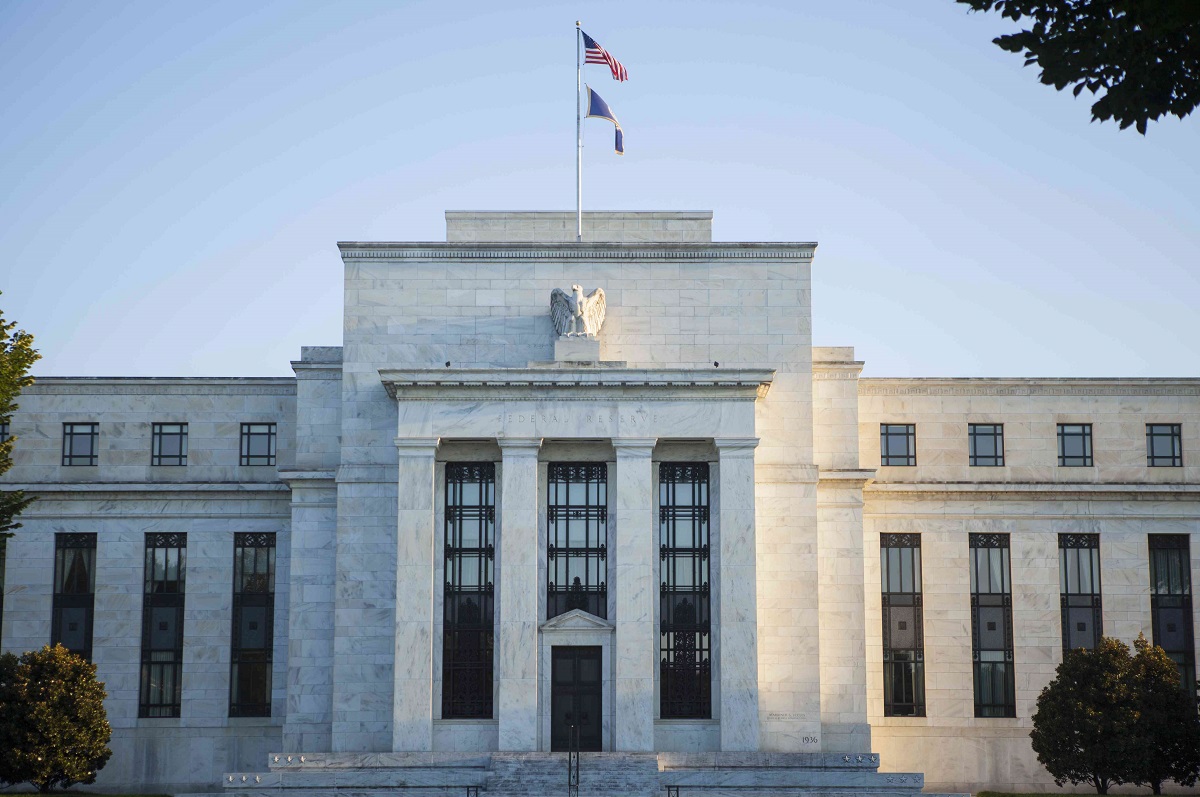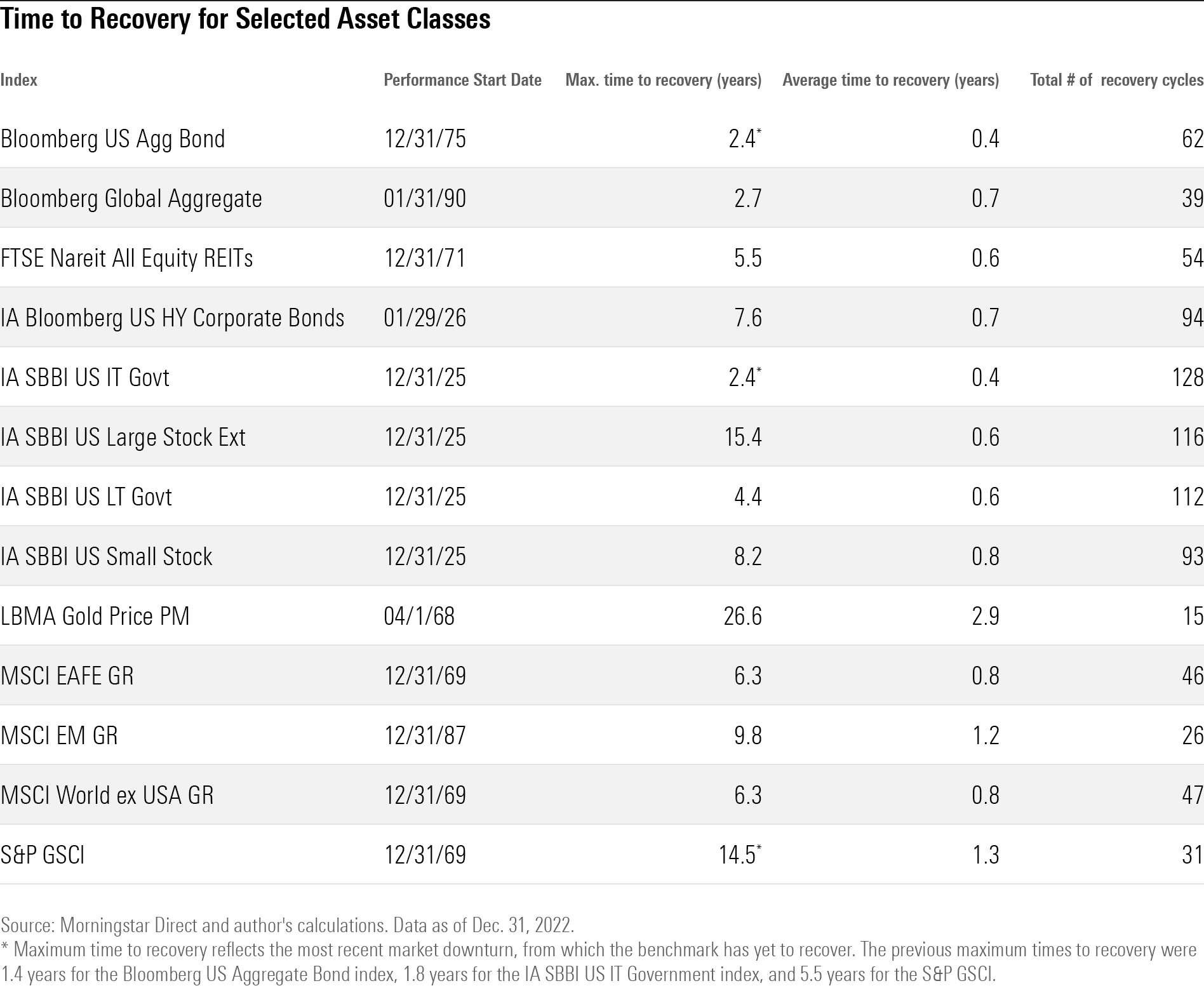Introduction
The global banking crisis has had a profound impact on economies and individuals around the world. It is essential to understand the underlying causes of this crisis in order to develop effective solutions and prevent similar occurrences in the future. The banking crisis can be traced back to a combination of factors, including economic downturns, the subprime mortgage crisis, excessive leverage, derivatives, lack of transparency, deregulation, risk management failures, greed, and the concept of “too big to fail”. This article will delve into these factors to provide a comprehensive understanding of what has led to the current banking crisis.
At its core, the banking crisis is a result of economic downturns that have severely impacted businesses and individuals. These downturns have led to a decrease in consumer spending, a rise in unemployment rates, and a general slowdown in economic activity. As a result, businesses began to struggle, leading to a decrease in their ability to repay loans and fulfill their financial obligations to banks and other lenders.
The subprime mortgage crisis, which emerged in the United States in the mid-2000s, further exacerbated the banking crisis. Financial institutions took on excessive risks by granting mortgages to borrowers with poor credit histories, known as subprime borrowers. When housing prices started to plummet, many of these borrowers defaulted on their mortgages, causing a ripple effect throughout the financial system.
Over-leveraging, or borrowing beyond a reasonable capacity to repay, played a significant role in the banking crisis. Financial institutions, driven by the pursuit of higher profits, engaged in aggressive lending practices, providing loans to businesses and individuals without properly assessing their ability to repay. This led to a buildup of unsustainable debt levels, which eventually collapsed under the weight of the economic downturn and mortgage crisis.
Derivatives, complex financial instruments whose value is derived from an underlying asset or index, also played a part in the banking crisis. The widespread use of derivatives, such as credit default swaps, created a web of interconnectedness among financial institutions. When the subprime mortgage crisis hit, the valuation of these complex instruments became highly uncertain, causing massive losses and undermining confidence in the financial system.
Lack of transparency within the banking sector was another contributing factor. Financial institutions often failed to disclose the true extent of their risks and liabilities, leading to a lack of trust among investors and other market participants. This opacity made it difficult for regulators and the public to assess the health and stability of the financial system, further exacerbating the crisis.
Economic Downturn
The global banking crisis can be attributed, in large part, to the severe economic downturn that affected countries worldwide. This downturn was characterized by a significant decline in economic activity, resulting in a sharp decrease in consumer spending, business investment, and international trade.
As economies entered into a recessionary phase, businesses faced declining sales and lower profit margins. This, in turn, led to widespread layoffs and job losses, further contributing to the downward spiral. With fewer people employed and disposable incomes reduced, consumer spending plummeted, impacting industries across the board.
The sudden and drastic contraction of economic activity had a domino effect on financial institutions. As businesses struggled to generate revenue and repay their debts, banks and other lenders experienced a surge of loan defaults. In addition, the value of assets held by financial institutions, such as real estate and securities, plummeted, leading to considerable losses.
In response to the economic downturn, central banks and governments implemented various measures to stimulate economic growth, such as lowering interest rates and implementing fiscal stimulus packages. However, these efforts were limited in their effectiveness, as the magnitude of the crisis was unprecedented and the roots of the problem extended beyond mere liquidity issues.
The economic downturn also had a profound impact on the housing market. The subprime mortgage crisis, which originated in the United States, resulted in a sharp decline in residential real estate prices. Many homeowners found themselves owing more on their mortgages than the value of their properties, leading to a wave of foreclosures.
The housing market collapse had a spillover effect on financial institutions, particularly those that held risky mortgages and mortgage-backed securities. Banks and other lenders faced substantial losses as the value of these assets deteriorated and defaults skyrocketed. The interconnectedness of the global financial system meant that these losses spread rapidly across borders, amplifying the impact of the crisis.
Furthermore, the economic downturn exposed weaknesses in the banking system, highlighting the need for more stringent regulation and oversight. The crisis revealed significant gaps in risk management practices and the lack of transparency within financial institutions. This realization prompted governments and regulatory bodies to reevaluate their regulatory frameworks and implement reforms aimed at preventing a similar crisis from occurring in the future.
Subprime Mortgage Crisis
The subprime mortgage crisis, which emerged in the mid-2000s in the United States, played a significant role in triggering the global banking crisis. This crisis was primarily fueled by the irresponsible lending practices of financial institutions and the subsequent collapse of the housing market.
During this period, financial institutions began to loosen their lending standards, granting mortgages to borrowers with poor credit histories, often referred to as subprime borrowers. These loans were often offered with low or no down payments and adjustable interest rates, making them highly attractive to individuals who would not qualify for conventional mortgages.
As a result, many individuals who were unable to afford the mortgages they obtained eventually defaulted on their payments. The decline in housing prices that began in 2006 further aggravated the situation, as many homeowners found themselves owing more on their mortgages than the value of their properties. This phenomenon, known as being “underwater,” led to a significant increase in foreclosures.
The subprime mortgage crisis had a cascading effect on the financial system. Financial institutions that had invested heavily in mortgage-backed securities, which were pools of mortgages packaged into tradable assets, suffered substantial losses as the underlying mortgages defaulted.
Furthermore, many financial institutions had engaged in the practice of securitizing mortgages, whereby the loans were bundled together and sold to investors. This process, intended to distribute risk across a wide range of investors, ultimately resulted in the spreading of the subprime mortgage crisis throughout the global financial system.
As the realization of the widespread defaults and declining value of mortgage-backed securities spread, banks and investors began to lose confidence in each other’s creditworthiness. This led to a freeze in interbank lending and a lack of liquidity within the financial system.
The subprime mortgage crisis served as a wake-up call for regulators and policymakers around the world. It exposed flaws in risk management practices within financial institutions and highlighted the need for greater transparency and accountability in the housing and mortgage markets. As a result, regulatory reforms were implemented to strengthen lending standards, improve risk assessment, and promote responsible lending practices.
Furthermore, the subprime mortgage crisis underscored the importance of investor protection and the need for rigorous oversight of financial institutions. The crisis prompted governments and regulatory bodies to establish stricter regulatory frameworks, enhance supervision, and impose penalties for misconduct.
Overall, the subprime mortgage crisis played a central role in triggering the global banking crisis by exposing vulnerabilities within the financial system and leading to a loss of confidence among market participants.
Over-Leveraging
One of the key factors contributing to the global banking crisis was the phenomenon of over-leveraging, where financial institutions borrowed beyond their reasonable capacity to repay. Over-leveraging not only increased the vulnerability of these institutions but also amplified the impact of the crisis when it struck.
In their pursuit of higher profits, financial institutions engaged in aggressive lending practices, granting loans to businesses and individuals without conducting proper due diligence on their ability to repay. This led to a rapid expansion of credit, fueling economic growth in the short term, but also creating a high level of debt that became unsustainable.
Over-leveraging was particularly evident in the housing sector, where mortgage lenders offered mortgages to borrowers with limited income or poor credit histories. These subprime mortgages were bundled together into mortgage-backed securities, which were then sold to investors. The excessive issuance and purchase of these securities created a bubble in the housing market, inflating prices to unsustainable levels.
As the housing market bubble eventually burst, borrowers were unable to meet their mortgage payment obligations. The significant number of defaults on subprime mortgages exposed the risk associated with over-leveraging and led to vast financial losses for the financial institutions that held these assets.
Furthermore, financial institutions themselves became over-leveraged as they relied heavily on short-term borrowing to finance their operations. This practice, known as leverage financing, allowed institutions to borrow money in the short term to invest in long-term assets. While this increased potential profits, it also magnified the impact of losses when those assets decreased in value.
When the banking crisis hit and the value of these assets declined, financial institutions found themselves with significant losses and limited liquidity. They were unable to repay their short-term debt obligations, leading to a liquidity crunch and a loss of confidence among investors and counterparties.
The consequences of over-leveraging were not limited to individual financial institutions. The interconnected nature of the global financial system meant that the problems of one institution could quickly spread to others, creating a systemic risk. This interdependence resulted in a domino effect, where the failure of one institution triggered a chain reaction, causing further failures and exacerbating the banking crisis.
The global banking crisis highlighted the dangers of excessive borrowing and the need for financial institutions to maintain a healthy level of leverage. Regulatory reforms have been implemented to establish stricter capital requirements and risk management practices that limit the degree of leverage institutions can undertake.
Overall, over-leveraging played a significant role in the global banking crisis by amplifying the impact of the economic downturn and leading to widespread financial losses. It served as a stark reminder of the importance of prudent lending practices and the need for financial institutions to balance risk and reward in their operations.
Derivatives
Derivatives, complex financial instruments whose value is derived from an underlying asset or index, played a significant role in the global banking crisis. These instruments allowed market participants to hedge against risks, speculate on future price movements, and manage their portfolios. However, the misuse and lack of understanding of derivatives contributed to the volatility and instability in the financial system.
One type of derivative that played a prominent role in the crisis was the credit default swap (CDS). A CDS is essentially an insurance contract against the default of a borrower or an instrument such as a bond or mortgage-backed security. Financial institutions used CDS to protect themselves against the risk of default, but they also used them for speculative purposes, betting on the creditworthiness of certain assets.
The widespread use and trading of CDS created a web of interconnectedness among financial institutions. When the value of subprime mortgages began to decline sharply, many of these assets were held by various institutions through CDS contracts. The uncertainty surrounding the value of these assets and the potential for widespread defaults eroded confidence in the financial markets.
Another type of derivative that exacerbated the crisis was collateralized debt obligations (CDOs). CDOs are securities that are backed by a pool of underlying assets, including mortgages. Financial institutions packaged mortgages together and sold them as CDOs to investors. The complexity of these instruments and their opaque nature made it difficult to assess the quality and true value of the underlying assets.
As the subprime mortgage crisis unfolded, the value of these CDOs and other collateralized securities plummeted, leading to significant losses for financial institutions that held them. The interconnectivity of the financial system meant that these losses quickly spread throughout the system, further exacerbating the crisis.
Derivatives also heightened the risks for financial institutions, as they often involved high levels of leverage. Financial institutions used derivatives to amplify their bets, increasing potential profits but also magnifying losses. This increased leverage led to a vulnerability that dramatically impacted the balance sheets of banks and investment firms when the underlying assets depreciated.
An additional problem with derivatives in the banking crisis was the lack of transparency. Many of these instruments were traded in unregulated or lightly regulated markets, known as over-the-counter (OTC) markets. This lack of transparency made it difficult to determine the true extent of risks held by financial institutions and increased the level of uncertainty for investors and counterparties.
The global banking crisis highlighted the need for increased oversight and regulation of derivative markets. Reforms have been implemented to improve transparency, regulate trading practices, and strengthen risk management requirements for financial institutions engaging in derivative transactions.
Derivatives, when used responsibly, can provide valuable risk management tools and enhance market efficiency. However, the excessive use and inappropriate application of derivatives contributed to the volatility and instability that led to the global banking crisis.
Lack of Transparency
A significant contributing factor to the global banking crisis was the lack of transparency within the financial system. Lack of transparency refers to the limited availability of relevant and accurate information regarding financial institutions, their operations, and the quality of their assets. This lack of transparency undermined market confidence, hindered effective risk assessment, and impeded the stability of the financial system.
One aspect of the lack of transparency was the inadequate disclosure practices of financial institutions. Banks and other financial entities failed to provide sufficient information about their exposure to risky assets, such as subprime mortgages and collateralized debt obligations (CDOs). This lack of disclosure made it challenging for investors and regulators to assess the true risks faced by these institutions. As a result, the extent of the financial system’s vulnerability was not apparent until the crisis hit.
The opaqueness of financial instruments, such as derivatives and structured securities, further exacerbated the lack of transparency within the banking system. These complex and intricate financial products made it difficult to assess their underlying value and risk. Investors and market participants often struggled to understand the true nature of the assets and the potential consequences of holding them. This lack of transparency hindered accurate risk evaluations and contributed to the rapid spread of losses throughout the system.
Additionally, the lack of transparency extended to the practices of credit rating agencies. These agencies assign ratings to financial instruments based on their assessment of creditworthiness. However, during the housing bubble, they provided inflated ratings to mortgage-backed securities and CDOs, which misled investors about the level of risk associated with these assets. This failure significantly eroded trust in the overall rating system and limited market participants’ ability to make informed decisions.
Regulatory authorities also faced challenges in maintaining transparency within the financial system. In some cases, regulators lacked access to critical information about the extent of financial institutions’ risk exposures. This limited their ability to proactively address vulnerabilities and take necessary regulatory action. Furthermore, the complex and global nature of the financial system made coordination between regulatory bodies challenging, leading to gaps in oversight and enforcement.
The lack of transparency contributed to a climate of uncertainty and fragility, where market participants struggled to accurately gauge the health and stability of financial institutions. As doubts grew, liquidity in the market dried up, and institutions became reluctant to lend to each other, exacerbating the crisis.
In response to the global banking crisis, regulatory reforms have been implemented to enhance transparency within the financial system. These reforms require financial institutions to provide more detailed and timely information about their risk exposures, capital levels, and liquidity positions. Additionally, measures have been taken to improve the transparency and accountability of credit rating agencies, ensuring that their ratings reflect accurate assessments of risk.
Enhancing transparency fosters greater market confidence, promotes better risk management practices, and enables policymakers and regulators to make more informed decisions. Transparency is a critical component in maintaining a stable and resilient financial system that can withstand economic shocks.
Deregulation
Deregulation played a significant role in the global banking crisis, as the loosening of regulations and oversight allowed for increased risk-taking and contributed to the instability of the financial system. Deregulation refers to the reduction or removal of government-imposed restrictions on the activities of financial institutions, allowing them greater freedom to operate and innovate.
One of the key factors contributing to the crisis was the deregulation of the financial industry in many countries, most notably the United States with the repeal of the Glass-Steagall Act in 1999. This act had previously separated commercial banking (taking deposits and lending) from investment banking (underwriting and trading securities). The repeal allowed commercial banks to engage in riskier investment activities and blurred the boundaries between different types of financial institutions.
The deregulation created an environment where banks could take on excessive risk without appropriate safeguards. Financial institutions began to engage in complex and opaque practices, such as off-balance-sheet transactions and the securitization of mortgages, without adequate oversight. This lack of regulation and oversight enabled the buildup of unsustainable levels of leverage and risk within the financial system.
Furthermore, deregulation contributed to the rise of shadow banking, a system of non-bank financial institutions that operate outside the scope of traditional banking regulations. These institutions, including hedge funds, money market funds, and investment banks, played a significant role in the financial crisis by engaging in risky and speculative activities without the same level of regulation and supervision as traditional banks.
In addition, deregulation allowed for the proliferation of complex financial instruments, such as derivatives, which were often traded in unregulated or lightly regulated markets. This lack of oversight and transparency, combined with the complexity of these instruments, made it difficult to assess the risks associated with them and contributed to the rapid spread of losses during the crisis.
Furthermore, financial innovation, which is often a product of deregulation, outpaced regulatory and supervisory frameworks. Financial institutions developed new and intricate products and strategies that were not adequately understood or monitored by regulators. This lack of understanding and oversight allowed for the accumulation of risks that eventually led to the collapse of financial institutions and the wider banking crisis.
The global banking crisis highlighted the need for a more balanced approach to regulation, where regulations promote stability and protect consumers without stifling innovation. Regulatory reforms have been implemented to address the shortcomings of deregulation and enhance the oversight of financial institutions. These reforms aim to establish stricter capital requirements, improve risk management practices, and increase transparency and accountability.
It is important to strike a balance between promoting a competitive and efficient financial system and safeguarding against excessive risk-taking. Deregulation, when not accompanied by appropriate regulations and effective oversight, can lead to vulnerabilities within the financial system that have far-reaching consequences.
Risk Management Failures
Risk management failures were a significant contributing factor to the global banking crisis. Financial institutions, both banks and non-bank entities, failed to adequately assess and mitigate risks, leading to severe losses and the destabilization of the financial system.
One of the primary risk management failures was the underestimation of credit and market risks associated with the subprime mortgage market. Financial institutions, driven by the desire for higher profits, disregarded the potential for widespread defaults on subprime mortgages and the subsequent impact on the value of mortgage-backed securities. As a result, these institutions held these risky assets without appropriate provisions for potential losses, only to be caught off-guard when the housing market collapsed and defaults skyrocketed.
Another risk management failure was the overreliance on credit rating agencies. Financial institutions heavily relied on the ratings assigned by these agencies to assess the creditworthiness of various assets, including mortgage-backed securities and collateralized debt obligations. However, the ratings provided by these agencies were often flawed, as they failed to accurately assess the underlying risks of these complex instruments. Financial institutions blindly trusted these ratings without conducting their own thorough due diligence, leading to significant losses when the true risks were revealed.
Poor risk management practices were also apparent in the excessive leverage undertaken by financial institutions. Many institutions borrowed heavily to fund their investments and operations, amplifying potential profits but also magnifying potential losses. This high level of leverage left financial institutions vulnerable to market shocks and impaired their ability to weather the significant downturn during the crisis.
Moreover, risk management failures were evident in the lack of diversification within financial portfolios. Institutions concentrated their investments in certain sectors or asset classes, thus exposing them to significant risks when those sectors or classes experienced downturns. Lack of diversification created a systemic risk, as the failures in one area had a cascading effect on the broader financial system.
Lack of oversight and accountability by boards and executives within financial institutions also contributed to risk management failures. In some cases, executives pursued short-term gains and bonuses without adequately considering the long-term risks associated with their strategies. This short-term focus led to a lack of proper risk assessment and an overemphasis on short-term profits, ultimately putting the stability of the institutions and the financial system at risk.
The global banking crisis has brought attention to the need for stronger risk management practices within financial institutions. Regulatory reforms have been implemented to enhance risk assessment, promote better risk management frameworks, and establish more robust capital and liquidity requirements. These reforms aim to prevent a recurrence of the risk management failures that were apparent during the crisis.
It is crucial for financial institutions to integrate comprehensive risk management practices that encompass credit risk, market risk, liquidity risk, and operational risk. This involves conducting thorough risk assessments, implementing risk mitigation strategies, and regularly monitoring and evaluating risks to ensure the stability and resilience of institutions and the financial system as a whole.
Greed and Unethical Practices
Greed and unethical practices within the financial industry played a significant role in the global banking crisis. The relentless pursuit of profits, coupled with questionable behaviors and practices, contributed to the erosion of trust, the misallocation of resources, and the eventual collapse of financial institutions.
The culture of greed within the financial industry incentivized excessive risk-taking and short-term profit maximization. Many financial professionals focused on personal financial gain rather than the long-term health and stability of the institutions they served. This led to an environment where risky and speculative activities were encouraged, often at the expense of prudent risk management and ethical practices.
One example of unethical practices during the crisis was the misrepresentation and manipulation of financial data. Some financial institutions engaged in deceptive practices, such as concealing bad loans or misreporting the value of assets, in order to create a favorable perception of their financial health. This manipulation not only misled investors and regulators but also contributed to the overall instability of the financial system.
Another unethical practice was the predatory lending targeted at vulnerable borrowers. In the lead-up to the crisis, financial institutions extended mortgages to individuals who did not have the means to repay them. These subprime borrowers were often subject to exploitative lending practices, including high interest rates, hidden fees, and misleading information. This predatory behavior contributed to the rapid increase in defaults and foreclosures, ultimately undermining the stability of the housing market and the financial system.
Furthermore, the excessive executive compensation packages within financial institutions incentivized risky behavior and short-term gains. Some executives were rewarded with enormous bonuses based on short-term profits, regardless of the long-term consequences of their decisions. This skewed incentive structure encouraged the pursuit of risky strategies and the neglect of risk management practices in favor of immediate financial gain.
The lack of ethical leadership and accountability within financial institutions further exacerbated the crisis. Executives and board members, charged with the responsibility of overseeing the operations and risks of their institutions, sometimes turned a blind eye to unethical practices or actively encouraged them. This lack of oversight contributed to the erosion of public trust and the perpetuation of unethical behavior throughout the industry.
The global banking crisis prompted calls for greater ethical standards and accountability within the financial industry. Regulatory reforms have been implemented to curtail unethical practices, improve corporate governance, and enhance transparency. These reforms aim to foster a culture of integrity, responsibility, and long-term sustainability within financial institutions.
It is vital for the industry to prioritize ethical conduct, transparency, and accountability in order to regain trust and prevent future crises. This includes fostering a commitment to responsible lending, upholding accurate and transparent financial reporting, and aligning compensation structures with long-term performance and risk management.
Too Big to Fail
The concept of “too big to fail” refers to the idea that certain financial institutions are so large and interconnected that their failure would have severe repercussions for the entire financial system and the economy as a whole. This concept became a prominent issue during the global banking crisis, as the collapse of several major institutions raised concerns about the systemic risks posed by these entities.
Financial institutions deemed “too big to fail” often enjoy implicit or explicit government guarantees, as their failure could lead to widespread panic, a loss of confidence in the financial system, and potential economic collapse. These institutions generally have a significant presence in multiple markets and play a crucial role in providing essential financial services such as lending, payments, and risk management.
During the crisis, the failure of Lehman Brothers, a prominent investment bank, demonstrated the potential consequences of allowing a systemically important institution to fail without government intervention. The Lehman Brothers bankruptcy led to a freeze in credit markets, a loss of trust among financial institutions, and a sharp decline in global economic activity.
One of the key issues with the “too big to fail” concept is moral hazard. When financial institutions understand that they will be bailed out in times of crisis, it creates an incentive for them to take on excessive risk and engage in imprudent activities. The expectation of a government bailout leads to a perception that these institutions have a safety net, which encourages them to take on more risk than they otherwise would in a market without such guarantees.
The existence of “too big to fail” institutions also creates an unfair advantage, as they benefit from access to cheaper funding and lower borrowing costs due to the market perception of government support. This can hinder competition within the financial industry, favoring these large institutions over smaller, more innovative entities.
To address the concerns raised by the “too big to fail” problem, regulatory reforms have been implemented. These reforms aim to enhance the resilience and stability of systemically important financial institutions, while also reducing the risks and costs associated with their potential failure.
Regulations such as higher capital requirements, stress testing, and the implementation of resolution frameworks have been introduced to ensure that these institutions have adequate buffers to absorb losses in times of stress. The goal is to make these institutions more resilient and less reliant on government bailouts.
Additionally, some countries have implemented policies to facilitate the orderly resolution or winding down of failing financial institutions without disrupting the broader financial system. These frameworks allow for the controlled and managed unwinding of distressed institutions, reducing the systemic risks associated with their failure.
The “too big to fail” problem remains a complex issue that requires ongoing attention and monitoring. The goal is to strike a balance between protecting the stability of the financial system and preventing moral hazard. Addressing this issue is crucial to ensuring a more resilient and fair financial system that promotes competition, innovation, and financial stability.
Conclusion
The global banking crisis was a complex event caused by a combination of factors that led to the destabilization of financial institutions and the economy at large. The economic downturn, subprime mortgage crisis, over-leveraging, derivatives, lack of transparency, deregulation, risk management failures, greed, and the concept of “too big to fail” all played significant roles in this crisis.
The economic downturn resulting from reduced consumer spending, rising unemployment rates, and a general slowdown in economic activity triggered a chain of events that exposed vulnerabilities within the financial system. The subprime mortgage crisis, characterized by irresponsible lending practices and the subsequent collapse of the housing market, further exacerbated the crisis and led to significant losses for financial institutions.
Over-leveraging, fueled by the pursuit of higher profits, allowed for excessive borrowing and risk-taking, creating unsustainable levels of debt. The extensive use of derivatives and their opacity, along with a lack of transparency in financial practices and inadequate risk management, further added to the vulnerability of the financial system.
Deregulation, aimed at promoting flexibility and innovation within the financial industry, inadvertently led to a relaxation of oversight and regulation, enabling risky behaviors and activities. Greed and unethical practices, driven by short-term profit motives and a lack of accountability, eroded trust and contributed to the misallocation of resources and the collapse of financial institutions.
The concept of “too big to fail” exposed the systemic risks associated with institutions that are so large and interconnected that their failure could have catastrophic consequences. This concept raised concerns about moral hazard and the unfair advantage enjoyed by these institutions due to implicit or explicit government guarantees.
In response to the crisis, regulatory reforms have been implemented to enhance oversight, transparency, risk management practices, and the resilience of financial institutions. These reforms aim to strike a balance between promoting stability and innovation while preventing excessive risk-taking and reducing moral hazard.
The global banking crisis serves as a poignant reminder of the critical importance of a well-functioning and regulated financial system. It underscores the need for strong risk management practices, ethical conduct, transparency, and accountability within financial institutions. It also highlights the crucial role played by effective regulation and supervision in maintaining financial stability and promoting a level playing field.
By learning from the lessons of the banking crisis and implementing prudent reforms, the global financial system can strive towards a more resilient, inclusive, and sustainable future.

























